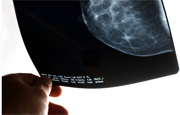
TUESDAY, April 6 (HealthDay News) — Women diagnosed with breast cancer before age 55 who also have a genetic mutation that boosts their risk for the disease are more likely to get cancer in the opposite breast than are women who don’t have the genetic mutations, a new study has found.
Risk increased fourfold for these women, who carry a mutation in the BRCA1 and BRCA2 genes, said Dr. Kathleen Malone, the study’s lead author, associate head of the breast cancer research program at the Fred Hutchinson Cancer Research Center in Seattle and a professor of epidemiology at the University of Washington.
That was the major finding of the study, published online April 5 in the Journal of Clinical Oncology, Malone said. And though previous studies found the same link, she said, the new one focused not only on high-risk women with genetic risks for breast cancer but also on women in the general population.
“My point in writing this paper is to make sure women had this knowledge, to understand what the risk might be,” she said.
Most other studies, she said, actually found a higher risk than she did, partly because they focused more intently on women with the mutations rather than on the general population.
For their study, Malone and her colleagues evaluated data from 705 women who had been diagnosed with both a first breast cancer and a subsequent cancer in the opposite breast. The researchers compared them with a group of 1,398 women with breast cancer in one breast only. All were from a group of 52,536 women diagnosed with a first breast cancer before age 55.
The women were all tested for mutations in BRCA1 and BRCA2, known to boost breast cancer risk, and were followed for 10 years. Women with BRCA1 or BRCA2 mutations have a 36 percent to 84 percent lifetime risk of breast cancer, compared with a 12 percent lifetime risk for the average woman born today.
The chances of developing cancer in the opposite breast were especially high for those diagnosed with their first cancer early. For instance, those with a BRCA1 or BRCA2 mutation diagnosed in their early to middle 30s had a 31 percent likelihood of developing cancer in the other breast in the next 10 years, but those diagnosed with the initial cancer at the same age but without the gene mutations had less than a 7 percent risk for cancer in the opposite breast in the next decade.
“Every woman who gets a first breast cancer is at increased risk for a second breast cancer,” Malone explained. “This additional burden of being a mutation carrier further increases your risk of opposite breast cancer by about four times more.”
Risk was higher with BRCA1 than with BRCA2, the study found.
And combining women of all ages, BRCA1 or BRCA2 carriers had an 18 percent risk for an opposite breast cancer at the 10-year follow-up, compared with a 4.9 percent risk for non-carriers.
Malone said that women diagnosed with breast cancer at younger ages should consider the possibility that they are mutation carriers and should talk with their physicians about possible genetic testing.
If they find out they are positive, they should then discuss a schedule of stepped-up screening, she said.
Susan Gapstur, vice president of epidemiology for the American Cancer Society, agrees with that suggestion.
“These results highlight consideration of genetic testing in young women diagnosed with breast cancer to better understand their future risk of cancer in the opposite breast and underscore the importance of appropriate prevention, treatment and regular screening to reduce risk.”
More information
The U.S. National Cancer Institute has more on BRCA1 and BRCA2 gene mutations.

